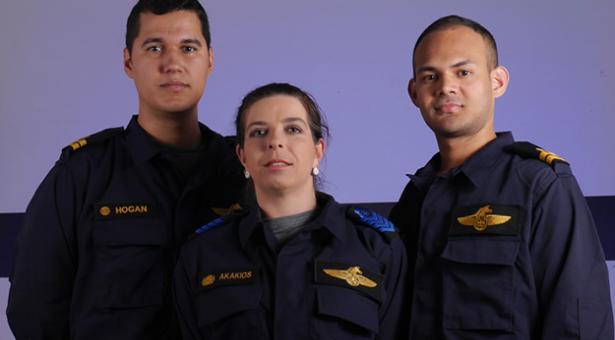

The size of the vessel’s crew is a critical element in the vessel’s design. Crew numbers and structure will need to be sufficient for achieving mission goals (including scientific and diplomatic), maintaining vessel operation and supporting the crew. This draft proposal is intended to provide guidance on expected crew disposition.
Crew Organisation
The crew will be structured around six functional departments, reflecting the ISDC’s branches. Each is managed by a Department Head, either a dedicated Executive Officer or the department’s senior officer who assumes this role in addition to their other duties. Officers manage specific functional areas within each department.
The vessel is forecast to require a core crew of 155 including 39 officers and 116 crew. The number of crew forecast for each function or system reflects the extensive automation and AI built into the vessel’s command and control system.
Engineering
The engineering department manages critical power generation, propulsion and support systems and provides technical maintenance services for all vessel technology.
Complement: 7 officers 57 crew
Medical
The medical department is responsible for ensuring the health and well-being of the crew. This includes the analysis of new infectious diseases encountered and the development of effective treatments where necessary.
Complement: 4 officers 7 crew
Navigation
The navigation department is responsible for maneuvering the vessel, ensuring it reaches an intended destination and for accurately establishing the vessel's position in space at any given time.
Complement: 1 officer 5 crew
Operations
Operations is responsible for the efficient running of the vessel, including logistics, resource (power, data, sensor) allocation, operational management and security.
Complement: 4 officers 35 crew
Science
The science department is responsible for using the vessel's array of sensor equipment to analyse stellar phenomenon, planetary discoveries and objects in the vessel’s operating environment.
Complement: 18 officers
Tactical
The tactical department is responsible for the defence of the vessel and for providing detailed and accurate information about the vessel's operating environment
Complement: 3 officers 12 crew
Additional Crew
Additional training crew will be assigned on most cruises for the purposes of obtaining practical instruction and experience. These crew members will fill posts with limited capability, however the additional support they are able to provide should offset the assistance and instructional support they will require from the core crew.
Depending on mission requirements a detachment of marines may also be assigned to a cruise.
Watch System
Core functions are supported by the crew on a continuous basis under a watch system, which divides the vessel’s day into three equal periods (called ‘watches’). Crew teams will be allocated to watches on a one-on, two-off basis.
Not all vessel functions require continuous crew support. Crew teams will be allocated to the most appropriate watch for that function, supported outside those times on an on-call basis.
The vessel’s current operating conditions are defined by modes, which determine which functions must be active and supported at any given time.
Cruise Mode
Cruise mode describes the normal operation of the vessel while in deep space. The vessel must be capable of navigation and full awareness of the Tactical Operating Environment (TOE) must be maintained.
The Officer of the Deck has command of the vessel and must at any given moment be able to provide the Captain or First Officer with a summary of the vessel’s current navigation, TOE disposition and core systems status, as well as any contingent operating conditions.
A watch officer is posted for each department except navigation. Crew teams are assigned to critical systems including propulsion, reactor, tactical, operations and the helm.
Alert Modes
There are a number of alert modes which increase the number of vessel functions which must be active and supported. Additional crew from off-watches are assigned to pre-defined secondary positions to augment the on-watch crew.
General Quarters
General Quarters is a broad state of alert to prepare the crew for contingent operating conditions including dangerous navigation conditions, intruder alert or the possibility of combat.
Either the Captain or First Officer will relieve the OoD and take the conn. Senior officers relieve subordinate watch officers. All other officers assume their stations. Chiefs assume supervision of on-watch and secondary teams.
Secondary crew teams are assigned to additional vessel functions including tactical, operations, engineering and damage control teams. Tactical systems including weapons and countermeasures are brought to standby status, ready for deployment at short notice. Power allocation is realigned to prioritise tactical and maneuvering systems. Any non-critical sensor use is suspended so that tactical analysis has priority.
Bulkhead hatches are closed, dividing the vessel’s habitable areas into a number of self-contained areas. Labs are locked down and hot food preparation in the galley is suspended. Guards are posted to main engineering spaces, the bridge and the boat bay.
Battle Stations
Battle Stations represents the vessel’s maximum state of readiness in response to serious and imminent threats to the safety of the vessel and crew, typically resulting from combat. A number of procedures are implemented in addition to general quarters:
If they have not already done so, the Captain takes the conn. The First Officer must also be on duty.
Tactical systems are brought to fully operational status. All torpedo tubes are charged for firing and one tube is loaded for immediate firing with a standard ordnance package.
The vessel is rigged for silent running, which requires that all sensor systems go into a non-transmitting standby mode and communications activity ceases without express approval from the Captain. Generation and propulsion systems are trimmed to minimise their EM emission profile.








